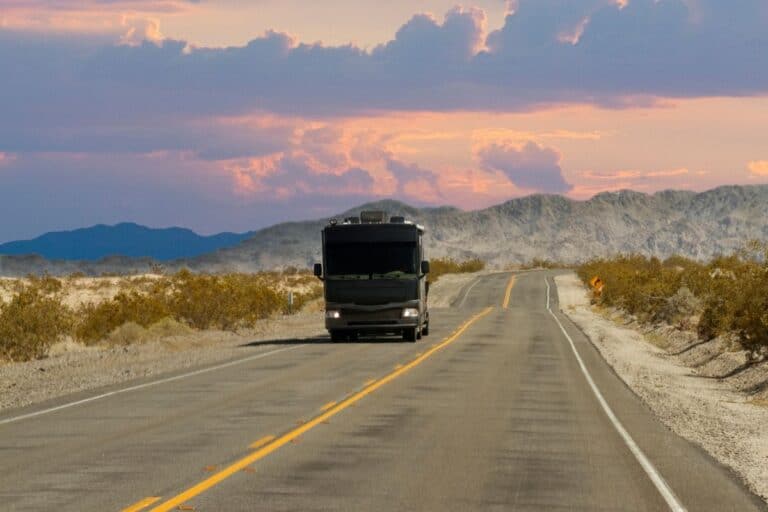
Editor’s Note: We share travel destinations, products and activities we recommend. If you make a purchase using a link on our site, we may earn a commission.
There is something about learning to drive a Class A RV that gives some people pause when they are trying to decide what type of motorhome to buy for their family.
It was one of the most frequent questions I got when we brought home our Vacationer.
Friends and family alike would look at it and say, “That’s a beautiful motorhome…no way I could drive that!” Or something like, “That’s gotta be so scary to drive. How did you learn?”
If I’m honest, Class A’s were not at the top of my list when we started looking for an RV because I had never driven anything nearly that big!
But, the reality is that it’s really not all that daunting. And, like anything else, the more you do it, the better you get!
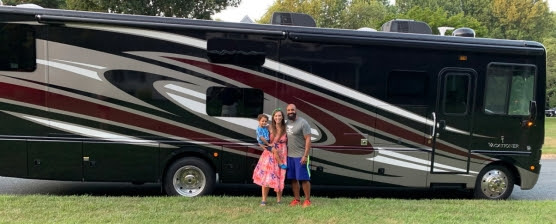
So, to help put nerves at ease for those considering a motorhome purchase, I’m going to be talking about the aspects of driving a Class A RV to give you a better idea of what it’s like, how it differs from driving a passenger vehicle and ideally give you the confidence to go take that test drive!
To be clear, I am not an expert or an instructor. The ideas and thoughts are based on my experience driving our Holiday Rambler Vacationer with a gas engine.
I have not driven a diesel pusher, and, while I understand there are some fundamental mechanical and operational differences, the concepts below should, by and large, apply to either platform.
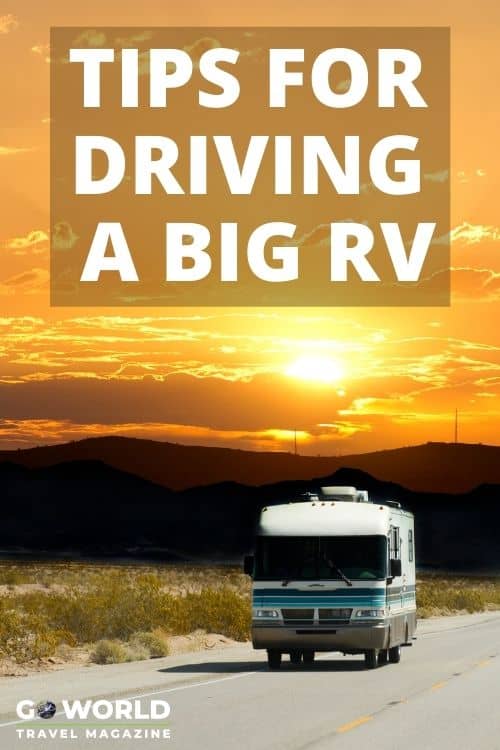
Driving an RV For the First Time
“So, you want to take it for a drive?” Those words hit me in the face like a right hook from Mike Tyson.
My family and I were standing in the living area of a beautiful Holiday Rambler motorhome. It was the very first RV we went to look at when we started our search.
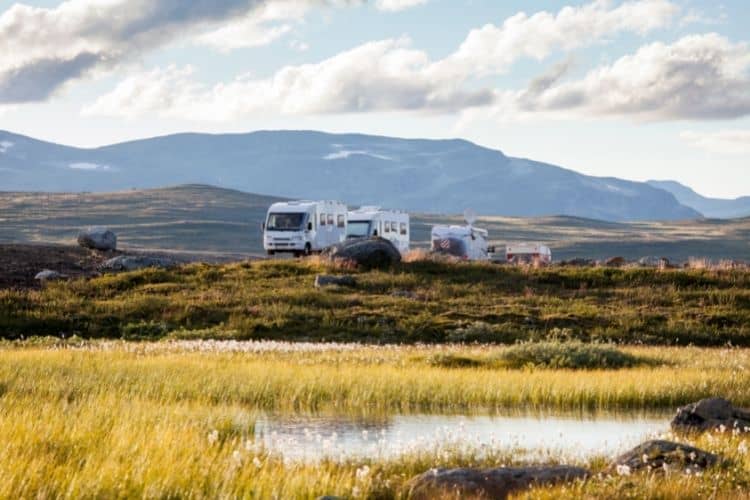
We had been given the tour and were honestly a little giddy with the thought that it could possibly be our new home for an incredible journey to come!
And then the seller asked that question and I was snatched right out of my daydream. “You mean right now?” I said as if his question was poorly timed.
I mean I knew it was coming, we were there as potential buyers. Certainly, I wouldn’t buy a car without driving it, this shouldn’t be any different, right?
So, after about a 15-second internal pep talk, and the realization that, if I was going to be driving an RV across the country, I had to start somewhere, I said, “Let’s go!”
And you know what? It wasn’t nearly as big a deal as I had made it out to be in my head! So now I can say with confidence that if you’re hesitant about getting a Class A because you lack the experience to drive it, don’t be. You can do it, and you’ll be glad you did!
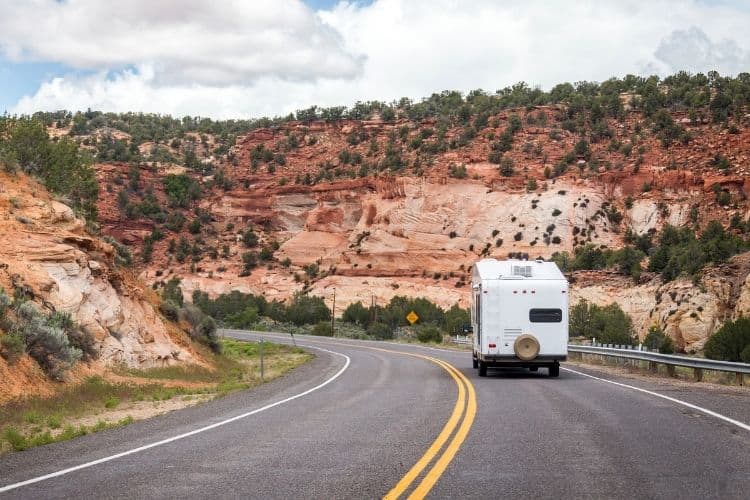
The Basics of Driving a Class A RV
Let’s get the obvious out of the way off the bat. Regardless of what length the coach you decide to get is, it will be bigger and heavier than what you’re used to driving. By a lot.
I had driven a few rental box trucks before. But none of them even came close to the size of our 37-foot-long Vacationer. Time and space will be your biggest allies as you pilot your coach.
So, if you keep these fundamental things in mind every time you turn the key, you’ll be in good shape.
- Know your height and weight (fully loaded). Write them down on a sticky note and place it on the dash where you can see it. Better to know you won’t fit under an overpass before you get to it than to find out while you’re stuck under it.
- Take left turns wider than you think you need to, and right turns even wider. As nicely as these machines can handle while on the road, they will not turn on a dime.
- Allow yourself additional space to get up to speed with traffic. More importantly, leave plenty of space between yourself and the vehicle in front of you to slow down. Acceleration and braking distances are greatly increased in a vehicle this size.

Road Signage for Large Vehicles
Another thing that you will realize is that there are a lot of road signs that now apply directly to you as the driver of a large vehicle.
You will start to pay attention to all those signs you ignore when driving a passenger vehicle.
Those suggested speed signs for off-ramps and sharp curves you always thought were comically slow will suddenly make perfect sense when cruising in your rig.
You’ll also want to be aware of height and weight restriction signs that may now apply to you when approaching bridges and overpasses.
A quick glance at that aforementioned sticky note will be quite helpful!
When travelling in mountainous or hilly regions you will want to keep an eye out for signs that tell you the grade percentage of an upcoming steep climb or descent. You’ll definitely want to slow down when approaching a steep descent.
Manage your speed by gearing down and braking intermittently to save your brakes.
The “Runaway Truck Ramp” signs you see on steep downhills are there for a reason and you do not want to have to use one of them!
What it boils down to is that you’ll now need to take note of all the signs that are there for truck drivers. While you may not be driving an 80,000 lb tractor-trailer, you are closer to their level than you are to the Honda Civics buzzing around you on the road.
So being aware of those signs will go a long way in helping you arrive safely to your destination.
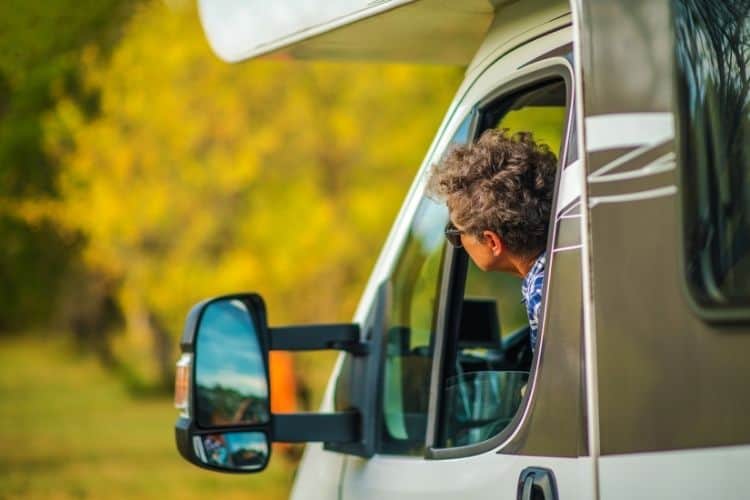
Turning and Maneuvering a RV
Now let’s talk a little more in-depth about maneuvering your coach. Other than the size and weight, there are a few key differences in how it will drive when compared to a passenger vehicle.
The biggest one in my mind is the driver’s seat position. In your car, you are positioned behind the front axle. But in your Class A RV, you will be sitting right on top of, or maybe even forward of, the front axle.
The difference is that when making a turn, the point at which you start to turn the wheel will be much later in the coach than it would in a car.
You will need to wait longer to start your turn when you are sitting on top of the front axle. And remember, your turns need to be wider so take that into account as well.
While we’re on the subject of turning, you will also notice a significant difference in steering wheel input. The reaction of the vehicle to steering wheel input is much slower in a Class A than in a car.
In other words, you’ll need to move the wheel more in your coach to get the same turning response that you would in a car.
For example, when driving a car and changing lanes on the highway, you may slightly move the wheel. But, in your Class A, a lane change requires more steering input. It may seem obvious, but it will take some getting used to.
Now that we’ve discussed the business upfront, let’s talk about the party in the back! You’ll want to be aware of how much the rear of your coach extends beyond the rear axle. This will obviously be different depending on the overall length, but it is important.
Think of the rear axle as a pivot point and know that your tail will swing wide when making sharp turns.
You definitely don’t want to swing it into a gas pump or tag a car in an adjacent lane. Just keep an eye on your mirror and you should be fine.
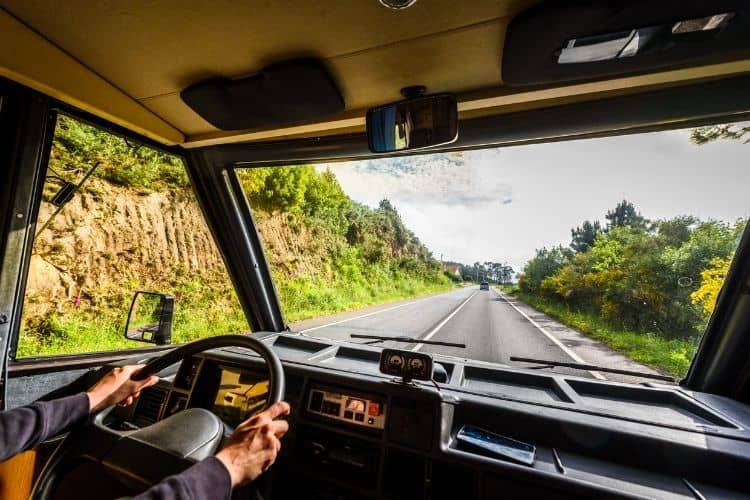
Lastly, backing up is a big reason people get anxious about driving an RV. But it gets easier with practice. You will find that you get pretty comfortable with it once you get a feel for your mirrors and cameras.
That being said, it’s always a good idea whenever possible to have a spotter on the outside watching your six, especially when backing into a tight campsite. Walkie-talkies or a speakerphone will come in handy here.
No matter how comfortable you get and how helpful the backup camera is, a vehicle this size will always have some blind spots. So, a second set of eyes on the outside never hurts.
Side note, I also leave the backup camera on while driving to be able to see our towed vehicle and vehicles approaching from behind.
Things to Expect When Driving a Class A RV
Wrapping things up here. I want to leave you with a few more tips and things to expect when you’re driving your coach down the road. These are things I wish I knew before I got behind the wheel. I know they will be helpful for you.
- Don’t rush, take your time. Be patient with yourself and others. Enjoy the journey!
- You will gain a new respect for truckers, bus drivers, and any other large vehicle operators. Cars will cut you off, lane changes in heavy traffic are a bear, and finding a place to flip a U-ey when you miss a turn will be tough. In these moments, just refer back to tip #1.
- When a tractor trailer passes you on the highway, be prepared for the air cushion that comes with it. You will feel it push you but when you know it’s coming, you can manage it. The first time took me off-guard, so be aware of the big boys with the heavy foot.
- When approaching a turn or an exit, get in the correct lane WAY before you need to. Trying to get over at the last minute is not fun or very safe. So, plan ahead.
- Scout your route. Plan your fuel and rest stops ahead of time to make sure you can get in and out of the parking lot easy enough. Truck map apps are a good tool here.
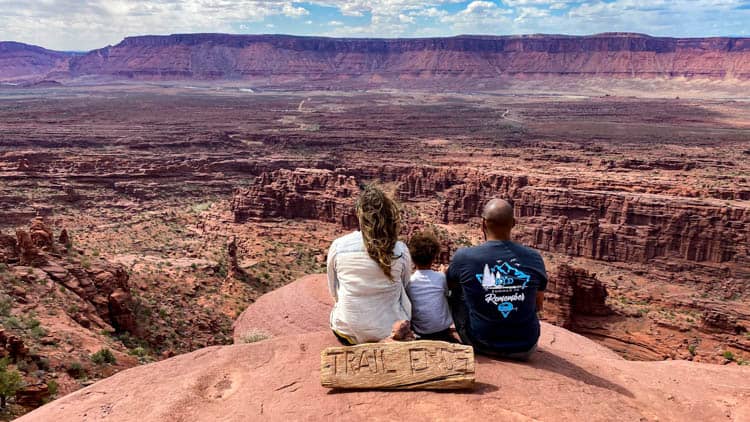
And there it is my friends. I knew nothing and had zero experience the first time I drove and enjoyed our RV.
But I took my time and made sure to be very aware of my surroundings. It really is enjoyable once you get comfortable and familiar with your coach.
Hopefully, this information helps give you some confidence to go find that Class A you and your family have been dreaming about. You’ll be rolling down to road to adventure in no time.
By the way, we ended up buying that Holiday Rambler Vacationer. The very first one I drove is the one we own, and I couldn’t be happier!
P.S. Always, always, always lock the fridge before driving! Don’t ask…
Author Bio: After living his entire life outside of Baltimore, Maryland, Spencer Stevens was bitten hard by the travel bug. This newfound desire to see the USA led him, his wife, Kristi and son, Kade, to make some big changes. So, in July of 2020, after selling their house and most of their belongings, they purchased a 37-foot Vacationer motorhome from Holiday Rambler and decided to see the country. Working from the road as marketing consultants, they also document their travels on social media as the Adventurtunity Family where they encourage others to prioritize family by seeking adventure and embracing opportunity.
- Palawan Perfection: Exploring the Philippines’ Last Ecological Frontier - July 13, 2025
- A Journey to Ashland, Oregon’s Shakespeare Festival - July 13, 2025
- The Ultimate Guide to Cairo’s Top Three Museums: Which Should You Visit? - July 12, 2025
